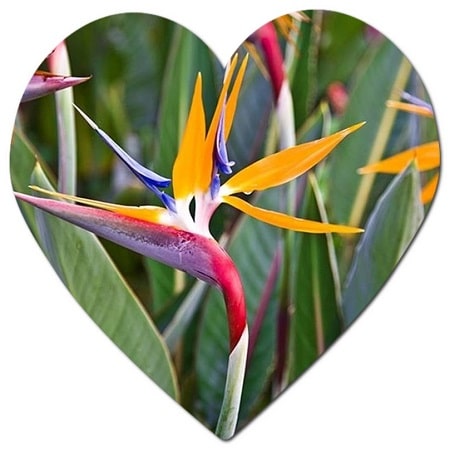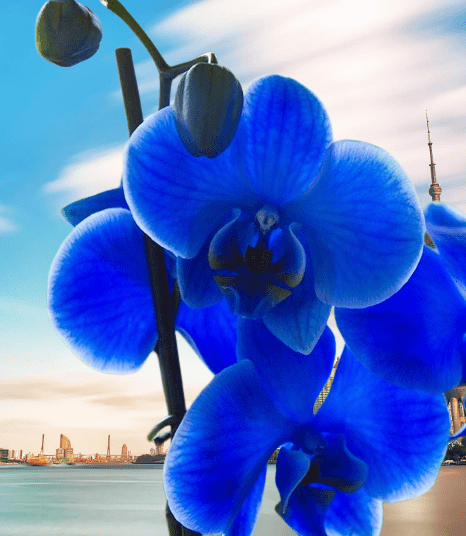One of the popular and culturally significant plants in Papua New Guinea is the Bird of Paradise (Strelitzia reginae). The Bird of Paradise is known for its striking and distinctive flowers that resemble the plumage of a bird. It is not only valued for its ornamental beauty but also holds cultural significance in Papua New Guinea.
The plant is often featured in traditional art and ceremonies, and its image can be found on various artifacts and decorations. The Bird of Paradise flower is also associated with the country’s national emblem and is a symbol of the Papua New Guinean people’s identity.

Apart from the Bird of Paradise, Papua New Guinea is rich in diverse plant life due to its tropical climate and varied ecosystems. The country is home to a wide range of orchids, ferns, and other tropical plants, many of which are endemic to the region. These plants play important roles in the traditional cultures, rituals, and daily lives of the people in Papua New Guinea.
What is the national flower of Papua New Guinea?
Papua New Guinea does not have an officially designated national flower. However, the Bird of Paradise (Strelitzia reginae) is often associated with Papua New Guinea and is considered a symbol of the country. While it may not hold the formal title of the national flower, the Bird of Paradise is widely recognized and celebrated for its unique and vibrant appearance.
What are the plants in Papua New Guinea?
Papua New Guinea is characterized by its rich and diverse flora, owing to its tropical climate and varied ecosystems. The country is home to a vast array of plant species, including many endemic ones. Here are some notable plants found in Papua New Guinea:

- Bird of Paradise (Strelitzia reginae): As mentioned earlier, the Bird of Paradise is not only a popular ornamental plant but also holds cultural significance in Papua New Guinea.
- Orchids: Papua New Guinea is known for its diverse orchid species. The country’s orchid flora includes many unique and colorful varieties, and orchids play a significant role in local cultures.
- Kauri Pine (Agathis spp.): Some species of Kauri Pine, a large coniferous tree, are found in Papua New Guinea. These trees can reach impressive heights and have valuable timber.
- Palm Trees: Various species of palm trees thrive in Papua New Guinea, contributing to the lush tropical landscapes. Sago palm (Metroxylon sagu) is one of the palms with economic importance, as its starch-rich pith is a traditional staple food.
- Bamboo: Bamboo is widespread in Papua New Guinea and is used for various purposes, including construction, tools, and traditional crafts.
- Rainforest Trees: Papua New Guinea is home to extensive rainforests, and numerous tree species, such as mahogany, teak, and rosewood, are found in these dense tropical forests.
- Ginger and Turmeric: These spice plants are cultivated in Papua New Guinea and are important in both traditional medicine and culinary practices.
- Ferns: The country has a variety of fern species, including tree ferns, which are commonly found in the rainforests.
- Medicinal Plants: Many traditional medicinal plants are used by the indigenous people of Papua New Guinea for various health purposes. Examples include plants with antibacterial or anti-inflammatory properties.
- Fruit Trees: Papua New Guinea is rich in fruit-bearing trees, such as papaya, banana, mango, and various citrus fruits.
It’s important to note that Papua New Guinea’s plant diversity is vast, and the above list provides only a glimpse of the many species found in this ecologically diverse country. The unique flora of Papua New Guinea is not only biologically significant but also culturally important to the indigenous communities that rely on these plants for sustenance, traditional practices, and medicinal uses.
What are the trees of Papua New Guinea?
Papua New Guinea is home to a diverse array of trees due to its tropical climate and rich ecosystems. The country’s forests are characterized by a wide variety of tree species, ranging from hardwoods to conifers. While it’s challenging to provide an exhaustive list, here are some notable tree species found in Papua New Guinea:
- Kauri Pine (Agathis spp.): Several species of Kauri Pine are found in Papua New Guinea, and these large coniferous trees are valued for their timber.
- Rosewood (Dalbergia spp.): Rosewood trees are known for their dark, dense timber and are found in the rainforests of Papua New Guinea.
- Teak (Tectona grandis): Teak trees are cultivated for their high-quality timber and are found in plantations in various parts of the country.
- Mahogany (Swietenia spp.): Mahogany trees are valued for their hardwood, and some species are found in the forests of Papua New Guinea.
- Agarwood (Aquilaria spp.): Agarwood trees produce a resin that is highly prized for its aromatic properties. These trees are found in some parts of Papua New Guinea.
- Ironwood (Intsia spp.): Ironwood trees, known for their dense and durable wood, are found in coastal and lowland areas.
- Dipterocarp Trees: Papua New Guinea has various species of dipterocarp trees, which are dominant in lowland rainforests.
- Coconut Palm (Cocos nucifera): Coconut palms are widespread in coastal areas and provide various products, including coconuts, palm oil, and building materials.
- Sago Palm (Metroxylon sagu): Sago palms are cultivated for their starchy pith, which is a traditional staple food in some regions.
- Rubber Trees (Hevea brasiliensis): Rubber plantations are present in Papua New Guinea, contributing to the production of natural rubber.
- Canarium Trees: Some species of Canarium trees produce nuts that are used in traditional cuisine and oil extraction.
It’s important to note that Papua New Guinea’s forests are incredibly biodiverse, and this list represents just a small fraction of the many tree species found in the country. The diverse flora of Papua New Guinea is not only ecologically significant but also culturally important, as many indigenous communities depend on these trees for their livelihoods, traditional practices, and cultural rituals. Additionally, conservation efforts are crucial to protect the unique and valuable ecosystems in Papua New Guinea.
